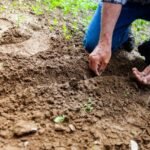Creating a wildlife-friendly garden is not only a rewarding experience but also a vital step towards conserving biodiversity and supporting local ecosystems. By providing essential habitat elements such as food, water, shelter, and nesting sites, you can attract a diverse array of wildlife, including birds, bees, butterflies, and other beneficial creatures. In this comprehensive guide, we’ll explore various strategies and techniques to attract and support wildlife in your garden, fostering a harmonious coexistence between humans and nature.
Benefits of Wildlife Gardening:
Biodiversity Conservation
Wildlife gardening plays a crucial role in conserving biodiversity by providing habitat and resources for a wide range of plant and animal species. By creating diverse and interconnected habitats, gardeners can help support local ecosystems and preserve native wildlife populations.
Pollination Support
Many wildlife species, including bees, butterflies, and hummingbirds, play essential roles as pollinators in the garden. By attracting these pollinators with nectar-rich flowers and suitable habitat, gardeners can enhance pollination rates and promote fruit and seed production in flowering plants.
Creating Habitat for Wildlife:
Native Plantings
Incorporating native plants into your garden is one of the most effective ways to attract and support wildlife. Native plants are adapted to the local climate and soil conditions, making them more resilient and attractive to native wildlife species. Choose a diverse selection of native flowers, shrubs, and trees to provide food and shelter for birds, bees, butterflies, and other wildlife.
Water Features
Water is essential for wildlife survival, especially during hot and dry periods. Incorporate water features such as birdbaths, ponds, or small streams into your garden to provide drinking and bathing opportunities for birds, amphibians, and other wildlife. Ensure that water sources are easily accessible and maintained to support a healthy and thriving wildlife population.
Providing Food and Shelter:
Bird Feeders and Baths
Installing bird feeders and baths can attract a variety of bird species to your garden, providing them with essential food and water resources year-round. Choose bird feeders with a variety of seed types to attract different bird species, and clean and refill feeders regularly to prevent disease transmission. Additionally, provide sheltered nesting sites such as birdhouses or dense shrubs to support breeding and nesting activities.
Butterfly Gardens
Create a butterfly-friendly garden by planting nectar-rich flowers and host plants for butterfly larvae. Choose a variety of flowering plants with different bloom times to provide a continuous nectar source throughout the growing season. Incorporate larval host plants such as milkweed for monarch butterflies or parsley for swallowtails to support the entire butterfly life cycle.
Sustainable Gardening Practices:
Chemical-Free Pest Control
Avoid using chemical pesticides and herbicides in your garden, as these can harm beneficial insects, birds, and other wildlife. Instead, practice integrated pest management (IPM) techniques such as companion planting, crop rotation, and hand-picking pests to control garden pests naturally and maintain a healthy balance of predators and prey.
Water Conservation
Conserve water in the garden by using mulch to retain soil moisture, installing drip irrigation systems, and collecting rainwater in barrels for irrigation. Minimize water waste by watering plants early in the morning or late in the evening when evaporation rates are low, and choose drought-tolerant plants that require less water.
Conclusion:
Attracting and supporting wildlife in your garden is a fulfilling endeavor that benefits both the environment and your local ecosystem. By creating habitat, providing food and water, and practicing sustainable gardening techniques, you can transform your garden into a thriving sanctuary for birds, bees, butterflies, and other wildlife. Embrace the principles of wildlife gardening and contribute to the conservation of biodiversity while enjoying the beauty and diversity of nature in your own backyard.
FAQs:
- How can I attract bees to my garden?
- To attract bees to your garden, plant a variety of nectar-rich flowers in different colors, shapes, and sizes. Avoid using pesticides and herbicides, and provide nesting sites such as bee hotels or bare patches of soil for ground-nesting bees.
- What plants are best for attracting butterflies?
- Butterfly-friendly plants include butterfly bush, coneflower, lavender, milkweed, and verbena. Choose a mix of nectar plants for adult butterflies and host plants for caterpillars to support the entire butterfly life cycle.
- How can I create a wildlife pond in my garden?
- To create a wildlife pond, choose a sunny location away from trees and shrubs, and dig a shallow basin with gently sloping sides. Line the pond with a flexible pond liner and add rocks, gravel, and aquatic plants to provide habitat for wildlife. Fill the pond with water and allow it to establish naturally over time.
- What types of bird feeders are best for attracting different bird species?
- Different bird species have different feeding preferences, so it’s best to offer a variety of feeder types, including tube feeders, hopper feeders, platform feeders, and suet feeders. Experiment with different feeder styles and seed types to attract a diverse range of bird species to your garden.
- How can I discourage wildlife pests from damaging my garden?
- To deter wildlife pests such as deer, rabbits, and squirrels, consider installing fencing, using repellents, or planting deer-resistant and pest-resistant plants. Additionally, remove attractants such as fallen fruit, bird feeders, and compost piles to discourage unwanted wildlife from entering your garden.
- Are there any regulations or permits required for creating a wildlife habitat in my garden?
- Regulations regarding wildlife habitat creation vary depending on your location and local ordinances. Check with your local wildlife agency or conservation department to determine if any permits or restrictions apply to creating a wildlife habitat in your garden.









